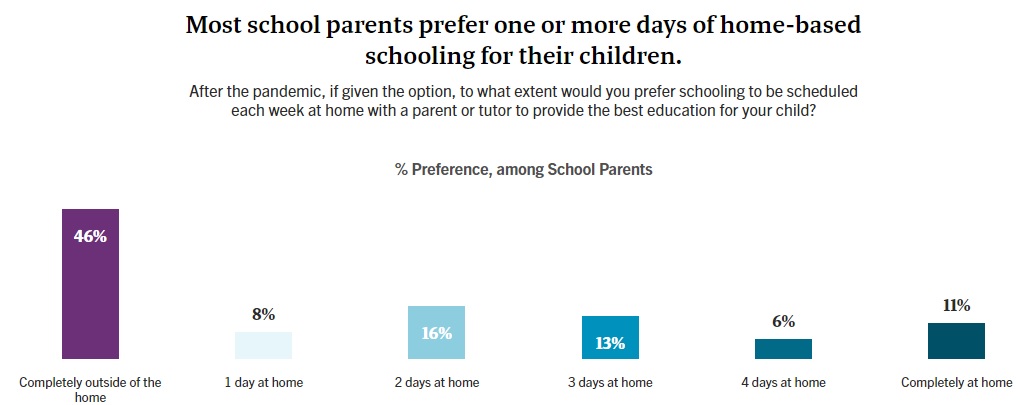The Covid-19 pandemic exposed a contradiction.
On one hand, remote learning and school closures were devastating to students and their learning. Partial reopening or “hybrid” schedules may have been even worse. Aggressive actions by some state and district leaders to reopen schools and return students to classrooms are looking smarter in hindsight.
At the same time, the pandemic accelerated a trend that had already been picking up steam. Some families are eschewing full-time school, choosing new options that blur the lines between schooling and homeschooling. A growing number of hybrid schools have begun catering directly to their needs, offering part-time schedules where students meet on campus a few days a week, or a few hours a day, and spend the remaining time learning at home (or in the woods, on the water, at the museum, on the farm, or other places).
For some families, this is the best of both worlds. They combine the flexibility of homeschooling with the socialization, childcare and pedagogical guidance offered by schools.
Surveys by EdChoice show a surprisingly large number of families like having their children at home for at least one day during the school week, and the National Hybrid Schools Project has documented the proliferation of learning environments that match their preferences.

In theory, hybrid and part-time schools could be a natural fit for education savings accounts that allow families to direct publicly funded scholarships to a mix of education-related goods and services of their choice. Hybrid schools’ less-than-five-day schedules often mean tuition is lower than at typical private schools, and ESAs allow families to use any remaining funds on curriculum, tutoring, enrichment activities or supplies to supplement their schools’ programming.
In other words, hybrid schools jibe with two key features of ESAs: Giving families the flexibility to tailor a mix of learning opportunities to individual children and giving them an incentive to economize and put their limited scholarship funding to the most effective use.
In practice, however, learning environments that straddle the boundaries between schooling and homeschooling bump into policy barriers. Many states, for example, require schools to deliver a certain number of hours of instruction per year, or to meet students on campus a certain number of days per year.
As a result, hybrid schools may not be eligible for tuition payments through ESA programs in many states. According to a new policy report published last week by ExcelinEd, of the 16 states with active ESA programs, only seven afford some avenue for hybrid schools to qualify for private school tuition funded through ESAs. And even some of those fall short of the potential. Several states require eligible private schools to be accredited, which could pose a barrier to some hybrid schools. Utah’s program does not allow parents to roll over any leftover ESA funds for future school years. This “use-it-or-lose-it” design limits some incentives to economize.
Hybrid schools may qualify for funding by other means. For example, they may meet requirements to bill parents as part-time tutoring providers or through provisions in some state laws that allow Department of Education officials to approve expenses that meet the intent of scholarship programs but aren’t expressly authorized.
This is a next-generation question for states that have enacted ambitious education choice programs that allow families to direct public education funding to providers of their choice. What appropriate regulations will ensure all students have access to the instruction and support they need, while accommodating the proliferation of innovative models that blur the lines between schooling and homeschooling and allow parents to assemble education from multiple providers?
It’s a safe bet that in the coming years, state policymakers around the country will look for new ways to strike the right balance.
Go deeper: ExcelinEd’s Ben DeGrow explains how hybrid schools could help meet the demand in many states for new options that cater to families who use ESAs. The National Hybrid Schools Project’s annual surveys provide insight into the growing movement.


